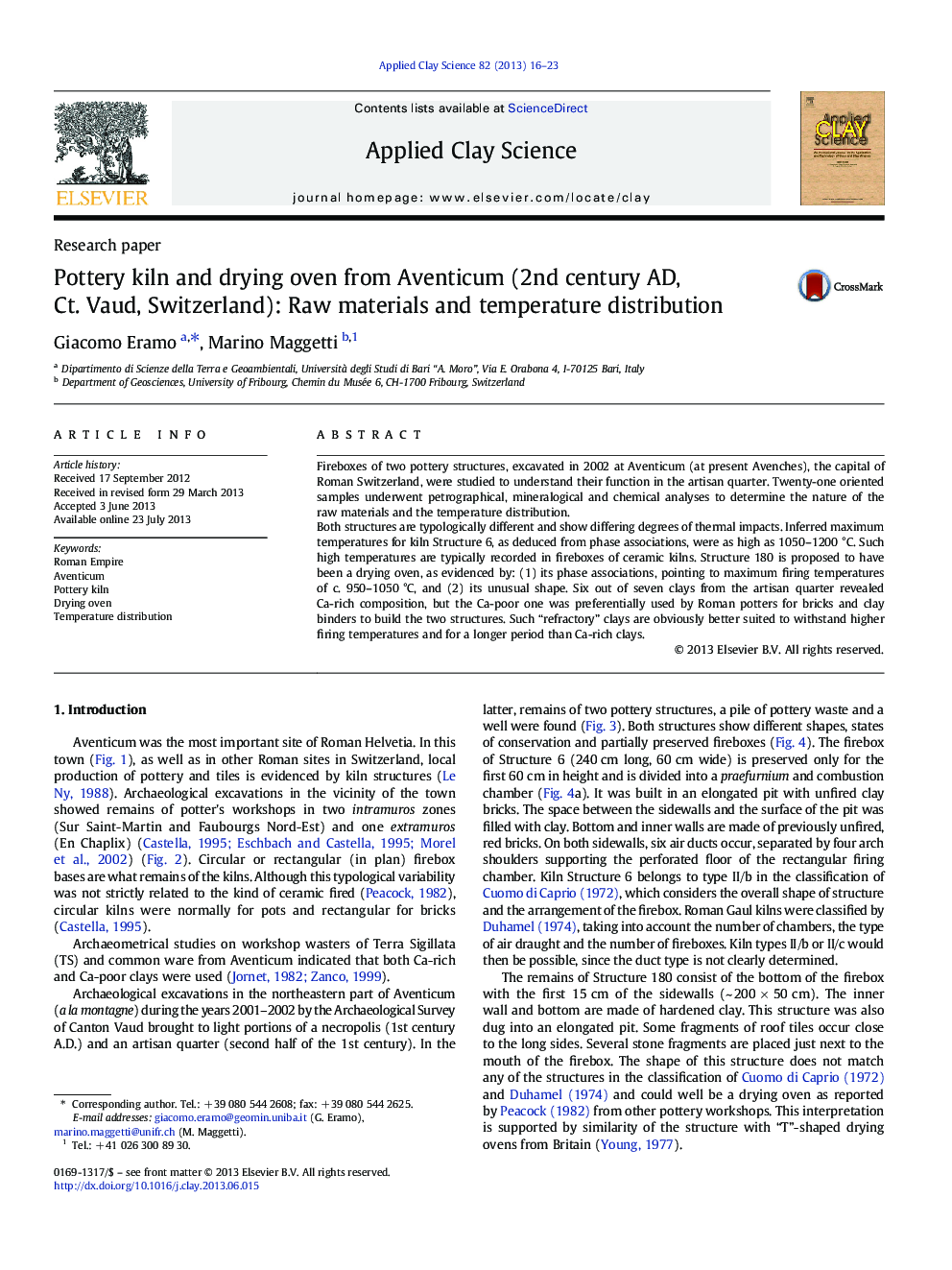| کد مقاله | کد نشریه | سال انتشار | مقاله انگلیسی | نسخه تمام متن |
|---|---|---|---|---|
| 1694923 | 1519091 | 2013 | 8 صفحه PDF | دانلود رایگان |

• Temperature distribution in two pottery structures from Aventicum was determined.
• Evidence of different local clays used for the pottery structures
• Technological analysis distinguished between firing kiln and drying oven for pots
Fireboxes of two pottery structures, excavated in 2002 at Aventicum (at present Avenches), the capital of Roman Switzerland, were studied to understand their function in the artisan quarter. Twenty-one oriented samples underwent petrographical, mineralogical and chemical analyses to determine the nature of the raw materials and the temperature distribution.Both structures are typologically different and show differing degrees of thermal impacts. Inferred maximum temperatures for kiln Structure 6, as deduced from phase associations, were as high as 1050–1200 °C. Such high temperatures are typically recorded in fireboxes of ceramic kilns. Structure 180 is proposed to have been a drying oven, as evidenced by: (1) its phase associations, pointing to maximum firing temperatures of c. 950–1050 °C, and (2) its unusual shape. Six out of seven clays from the artisan quarter revealed Ca-rich composition, but the Ca-poor one was preferentially used by Roman potters for bricks and clay binders to build the two structures. Such “refractory” clays are obviously better suited to withstand higher firing temperatures and for a longer period than Ca-rich clays.
Journal: Applied Clay Science - Volume 82, September 2013, Pages 16–23